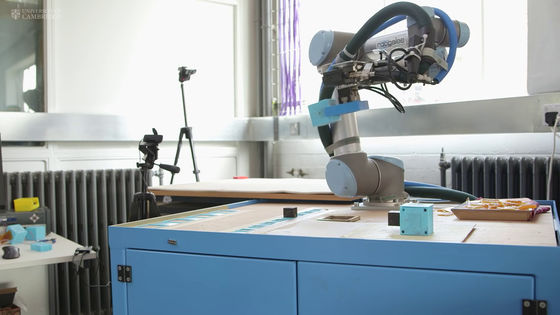Robots that make evolved children with their own hands, doubled performance in 10 generations

A research team at Cambridge University and Zurich Technical University creates a robot that creates and evolves child generations that have improved performance over their generation rather than people with their own hands.
PLOS ONE: Morphological Evolution of Physical Robots through Model-Free Phenotype Development
http://journals.plos.org/plosone/article?id=10.1371/journal.pone.0128444
Robots learn to evolve and improve - BBC News
http://www.bbc.com/news/science-environment-33867941
this isLuzius BrodbeckMr,Simon HauserMr,Fumiya IidaIn the research that Mr. and others are advancing, the robot arm corresponding to the mother assembles a plastic cubic "baby robot" with motor built in. You can see a simple explanation by seeing the following movie.
On the origin of (robot) species - YouTube
The visible robot arm is a mother, a light blue cube on the table is a baby.

My mother is trying to create a robot that moves as far as possible by combining cubes with built-in motors.

Early generations of robots are moving, but it seems that they are not able to move too far.

The mother robot has a criterion of "how far it was able to move" and trying to create a robot that can move farther in the next generation. At this time, humans do not lend their hands to improvement, and the robot himself thinks and improves the design. In the research, 10 generations of robots were created, and the tenth generation seems to have doubled the travel distance compared to the first generation.
According to Mr. Iida, he is using robotics engineering to investigate "how intelligence was born" which is a big mystery of biology. Originally, it entered into the path of robot engineering seems to be from disappointment that robots like those appearing in "Star Wars" and "Star Trek" were not in reality, and now it is still far from the goal , It says that if it is about 30 years it may reach the robot image that he had dreamed about.
Related Posts:







